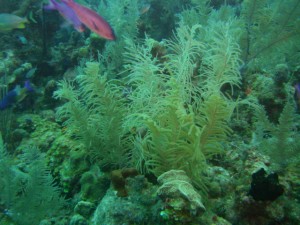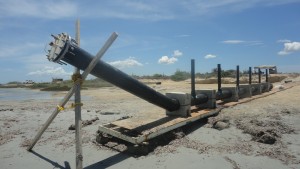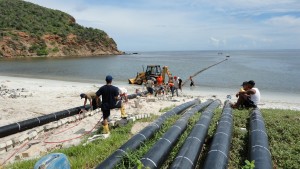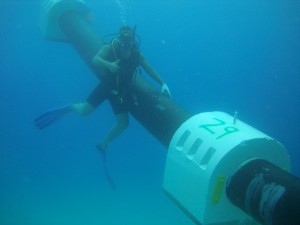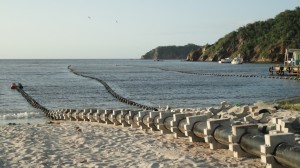A scientific study shows that the environmental footprint of plastic pipes is of medium equivalent to a third of the alternative materials
A new study, the prestigious independent Institute for Technological Research of Flanders (VITO), funded by the European plastic pipes industry is conclusive in its results: the plastic pipes are more sustainable than alternative materials.
The results indicate that, on average, plastic pipes have an environmental footprint that is two-thirds less than that of the piping systems materials such as concrete, copper or ductile iron.
Smaller footprint, higher profits
To make a fair comparison between different types of materials and determine the environmental impact of different products, it is necessary to evaluate and analyze every stage of its life cycle.
For each specific application, comparisons have been made according to ISO 14040 and 14044 standards in force, using the same functional unit for different materials compared.
“Environmental footprints” may be adverse or beneficial. Adverse effects such as the emission of greenhouse gases can be generated in the manufacturing stage or at the end of product life; the beneficial effects help to reduce emissions of greenhouse gases by saving energy while the product is in use. Regarding plastic pipes, the life-cycle assessment has shown that the environmental impact of plastic piping systems is significantly less than traditional materials systems.
Determining the environmental impact of a product
A life-cycle assessment (LCA) complete and scientific is the standard method for an objective comparison of the environmental impacts of different products or services. This type of evaluation involves the systematic collection and evaluation of quantitative data on inputs and outputs of material, energy flows and associated waste product throughout its entire life cycle. Therefore, to calculate global impacts, assess the full range of processes, starting with the production of raw materials, their transformation into products and continuing with the transportation and installation of the products, the use of the product during its life useful, and finally disposal or reprocessing product at the end of his life.
The results of the evaluation of LCA are generally published in the form of Environmental Product Declarations (EPDs) in accordance with prEN 15942, to communicate the overall environmental impact of a product.
The European Association of Plastic Pipes and Fittings (TEPPFA) is an industry association representing European-wide leading manufacturer of plastic pipes and their national associations. TEPPFA has commissioned a series of Environmental Product Declarations, which cover the main types of plastic piping systems, based on updated data ACL.
These life-cycle assessment (LCA) have been performed by internationally renowned Flanders Institute for Technological Research (VITO), following the methodology of ISO 14040 and 14044. The results obtained by VITO were validated independently by other recognized institute sustainable development, Denkstatt GmbH in Austria, following the methodology of ISO standards.
The study said the data collection systems of plastic pipes companies representing more than 50% of the European market. Data piping systems of alternative materials (concrete, ductile iron and copper) were obtained from publicly available information.
Environmental impact criteria
The environmental impact of each pipe material has been evaluated throughout its entire life cycle, according to six different criteria:
1) Potential of “abiotic” destruction: the over-extraction of mineral, fossil fuels and other inert and non-renewable materials, can lead to depletion of natural resources.
2) Potential “acidification” emissions, such as sulfur dioxide and nitrogen oxides, due to manufacturing processes, leading to acid rain that damages the soil, water resources, human and animal organisms and the ecosystem.
3) Potential ‘Eutrophication': arising from the over-fertilization of water or soil nutrients such as nitrogen and phosphorus. This accelerates the growth of plants and kill animal life in lakes and waterways.
4) Potential contribution to “global warming” (carbon footprint): the greenhouse gases (CO2 and methane) in the atmosphere is one of the biggest contributors to global warming, affecting both human health and the ecosystem in which we live.
5) Damage Potential Ozone: reduction of the ozone layer in the atmosphere caused by the emission of chemical foaming agents and cleaning allows the passage of higher levels of UV radiation from the sun, causing skin cancer and decreasing performance the crops.
6) Potential “oxidation photo-chemistry” chemical photocatalytic reaction of sunlight with primary air pollutants such as volatile organic compounds and nitrogen oxides, causes chemical mists (smog) affecting human health, crops and the ecosystem in general.
Comparison of different piping systems
Different types of piping systems typically offer different benefits. These are provided by a range of alternative materials and different kinds of plastic. In this study we have made direct comparisons between plastic pipes Polypropylene or PVC and ductile pipes for evacuation casting systems; polyethylene or PVC pipes and ductile iron pipes in water supply systems under pressure; Three different types of PVC pipes or concrete pipes Polypropylene and sanitation systems without pressure; and crosslinked polyethylene pipes (PE-X) or multilayer PE-PEX / AI / PE-PEX and copper piping systems hot and cold water.
The study was conclusive in favor of plastic piping systems. Throughout the full range of applications evaluated, it has been shown that on average, the use of plastic piping systems reduced by two thirds the environmental footprint compared to alternative materials.
More detailed information about the EPD’s for each class of plastic pipe can be obtained by contacting www.teppfa.eu or TEPPFA: info@teppfa.org
Author’s note:
TEPPFA is the European association of plastic pipes and fittings, which groups 15 national associations and 11 direct member companies. TEPPFA represented by industry directly employs 40.00 people, annually produces 3 million tons of plastic pipe with an annual turnover of 12 billion euros
Source: ASETUB (Spanish Association of Manufacturers of Plastic Pipes and Fittings) http://asetub.es/medio-ambiente/declaraciones-medioambientales/articulo-de-prensa
Adapted by: Maidee Falcon (Industrial Engineering)





